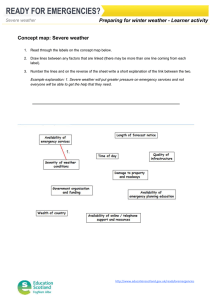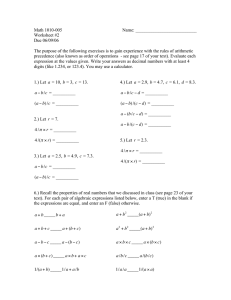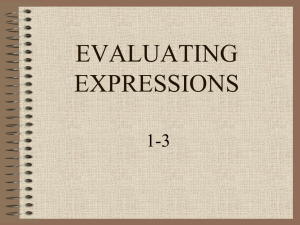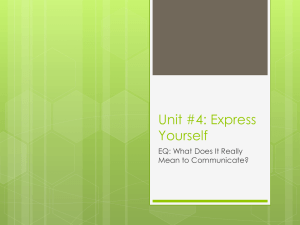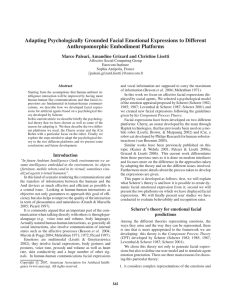Egypt ‐ Focus on expressive arts
advertisement
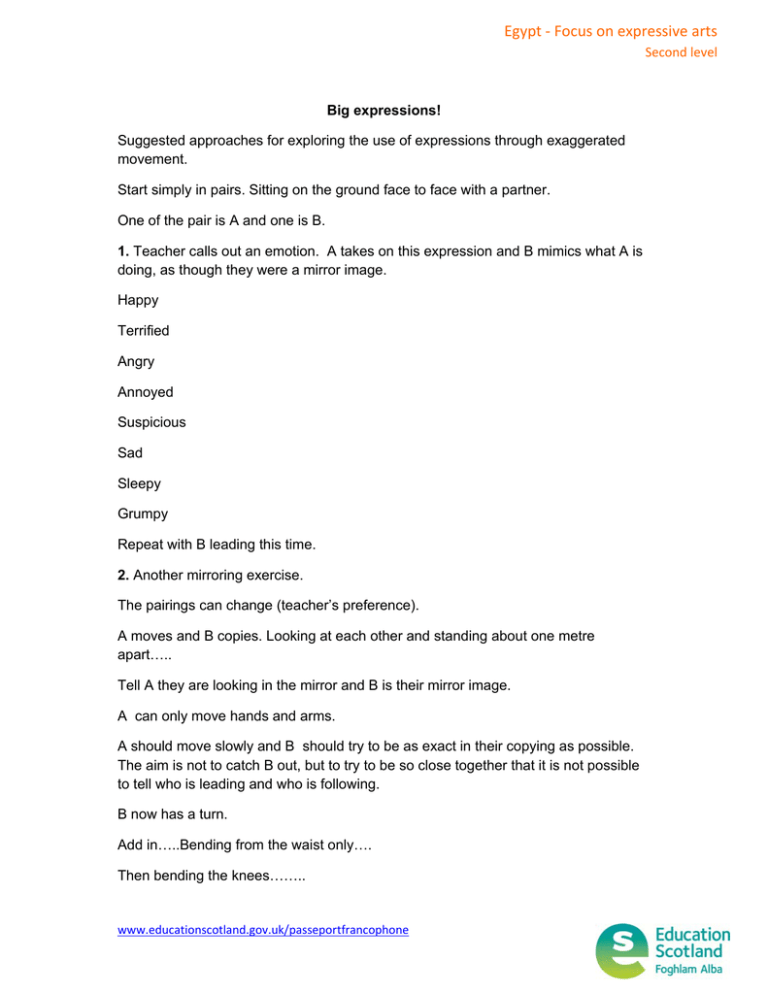
Egypt ‐ Focus on expressive arts Second level Big expressions! Suggested approaches for exploring the use of expressions through exaggerated movement. Start simply in pairs. Sitting on the ground face to face with a partner. One of the pair is A and one is B. 1. Teacher calls out an emotion. A takes on this expression and B mimics what A is doing, as though they were a mirror image. Happy Terrified Angry Annoyed Suspicious Sad Sleepy Grumpy Repeat with B leading this time. 2. Another mirroring exercise. The pairings can change (teacher’s preference). A moves and B copies. Looking at each other and standing about one metre apart….. Tell A they are looking in the mirror and B is their mirror image. A can only move hands and arms. A should move slowly and B should try to be as exact in their copying as possible. The aim is not to catch B out, but to try to be so close together that it is not possible to tell who is leading and who is following. B now has a turn. Add in…..Bending from the waist only…. Then bending the knees…….. www.educationscotland.gov.uk/passeportfrancophone Egypt ‐ Focus on expressive arts Second level Then able to take three paces in any direction. A and B should take turn and turnabout. 3. As a class…..Ask the class to get into rows of five/six with each row behind one another. Take out one pupil to the front and ask them to put their back to the group and then move slowly to one side, then to the other, taking only small steps. The whole class should move in the same direction. Explore and experiment with this idea, using different students to take a turn. 4. Extend the work by asking the person at the front to use both their MOVEMENT and their FACIAL EXPRESSION to show an emotion. Take these from Item 1 if it helps but this can be extended/ explored further. It should be fun for everyone in the class. Teacher demonstration works here and can be great fun. 5. In smaller groups, ask pupils (probably in 3’s and 4’s) to act out the section of the Champollion play where the crowd is watching the excavation of the Rosetta stone. They should improvise the dialogue, but be sure to include (in French) the words for: What is it? (Wonder) What has he found? (Fear) What can it be? (Excitement) Look, it is a lost treasure! (Joy at the discovery) And include the physical movements and facial expressions they need. It is fun to see them doing this in unison, or you could explore further possibilities i.e... doing different expressions at different times, adopting the pupils’ own creative ideas etc. Don’t be afraid to play around with the crowd scenes but reinforce the idea of Exaggeration. www.educationscotland.gov.uk/passeportfrancophone
